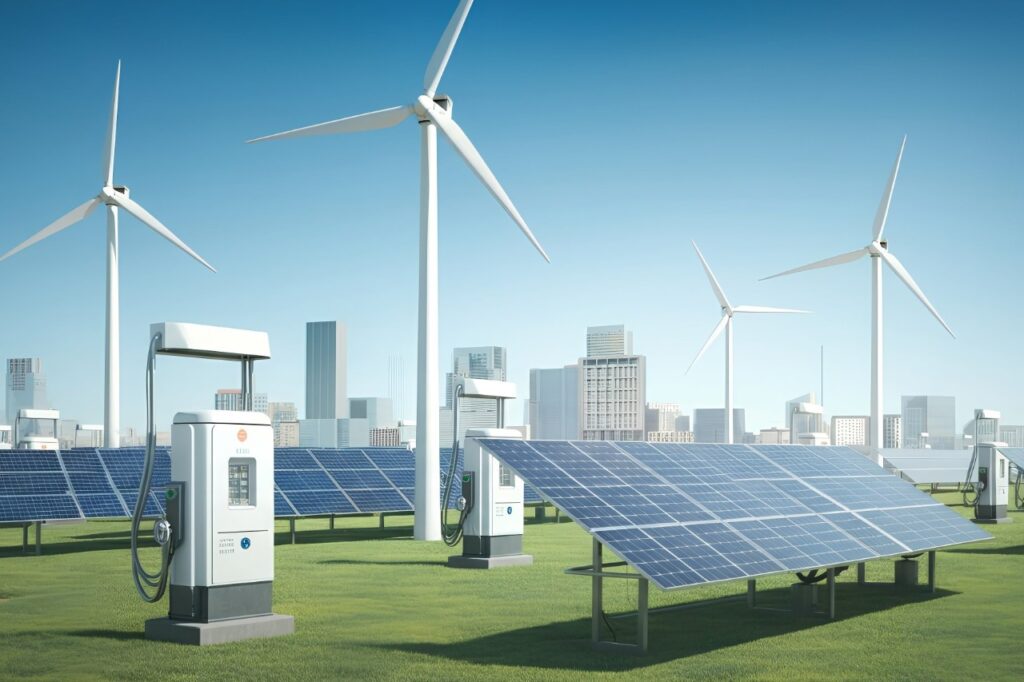Dieser Beitrag ist auch verfügbar auf:
Deutsch
What are smart grids?
Smart grids are an evolution of traditional power grids that use digital technologies and communication systems to make energy production, distribution and use more efficient. These networks are not only designed to provide electricity, but also to process information in real time. This allows energy flows to be better monitored, controlled and optimized.
However, the importance of smart grids goes far beyond technical improvements. They are a central building block of the energy transition and enable a more sustainable and decentralized energy supply.
The energy transition requires an extremely flexible energy infrastructure
A key feature of the energy transition is the transition from fossil fuels to renewable energy sources such as wind and solar energy. However, these sources have one major limitation: their production is volatile and weather-dependent. Smart grids offer crucial solutions here:
1. Load management
With intelligent control systems and smart meters, household appliances that generally consume a lot of electricity (washing machines, dishwashers, dryers) can be operated when there is an abundance of electricity – e.g. when there is strong wind.
2. Real-time demand analysis
Smart grids continuously collect data from electricity producers and consumers. This makes it possible to synchronize fluctuations in wind or solar generation with demand.
3. Virtual power plants
Lesser decentralized power generators (e.g. solar systems and wind farms) can be combined in smart grids to form virtual power plants. These act like a single energy generator and improve grid stability.
From Consumer to Prosumer
Traditional power grids were based on a centralized model in which energy flowed from large power plants to consumers. Smart grids reverse this model. Consumers become “prosumers” (producers + consumers) who can generate their own electricity, store it and feed it into the grid.
1. Energy independence through local storage
Battery systems allow households to store their solar energy and use it when needed. In combination with smart grids, excess energy can be sold, making prosumers part of the energy market.
2. Peer-to-peer energy trading
Blockchain technologies and smart contracts make it possible to trade excess energy directly between consumers. For example, a household with solar panels could sell excess energy to its neighbors instead of feeding it into the grid.
Other benefits of smart grids
1. Advanced Metering Infrastructure (AMI)
Smart meters are just the beginning. AMI enables two-way communication between suppliers and consumers, enabling dynamic tariffs.
2 AI-based forecasting models
Artificial intelligence can analyze weather forecasts and consumption patterns to plan network capacities in advance.
3. Bidirectional energy flows
Unlike traditional grids that only transport energy in one direction, smart grids enable energy flows in both directions. This is crucial when many prosumers feed electricity into the grid at the same time.
Technical Challenges for Smart Grids
Strong data security is a must
The digital networking at the heart of smart grids brings with it an increased risk of cyber-attack. Hackers could try to access sensitive data or disrupt the network. Robust security measures and continuous monitoring are required to counter these threats.
High regulatory barriers
The legal integration of prosumers and virtual power plants is not yet sufficiently developed in many countries. This makes it difficult to integrate innovative models into existing energy markets and delays the implementation of smart grid technologies.
High investment costs
The construction of smart grids requires significant financial resources, especially for the modernization of existing infrastructure, the installation of smart meters and the implementation of new control systems. These high initial costs pose a major challenge for grid operators, governments and investors, especially in countries with limited budgets or poorly developed energy industries.
The ION Power Grid aims to overcome the barriers of today’s electricity industry
In the future, however, smart grids could form the basis of a fully decentralised energy system in which every household is part of an autonomous network. The operators of the ION Power Grid in Salzburg, Austria, are already preparing for such a future.
The ION Power Grid is an advanced power grid that combines technologies such as AI-based real-time data analysis, bi-directional energy flows and blockchain for peer-to-peer energy trading. Its technology enables the efficient integration of adaptive load management and the formation of virtual power plants from decentralised generators.
Thanks to its focus on data security, the system offers approaches for flexible and sustainable energy management that meets the requirements of the energy transition.
No energy transition without smart grids?
Smart grids are more than just technical progress – they are a catalyst for the energy transition. With their ability to promote flexibility and decentralization, they make a decisive contribution to meeting the challenges of climate change.
While they are already being implemented in many countries today, their potential is still in its infancy. The coming years will show how such systems can revolutionize the way we generate and use energy.






